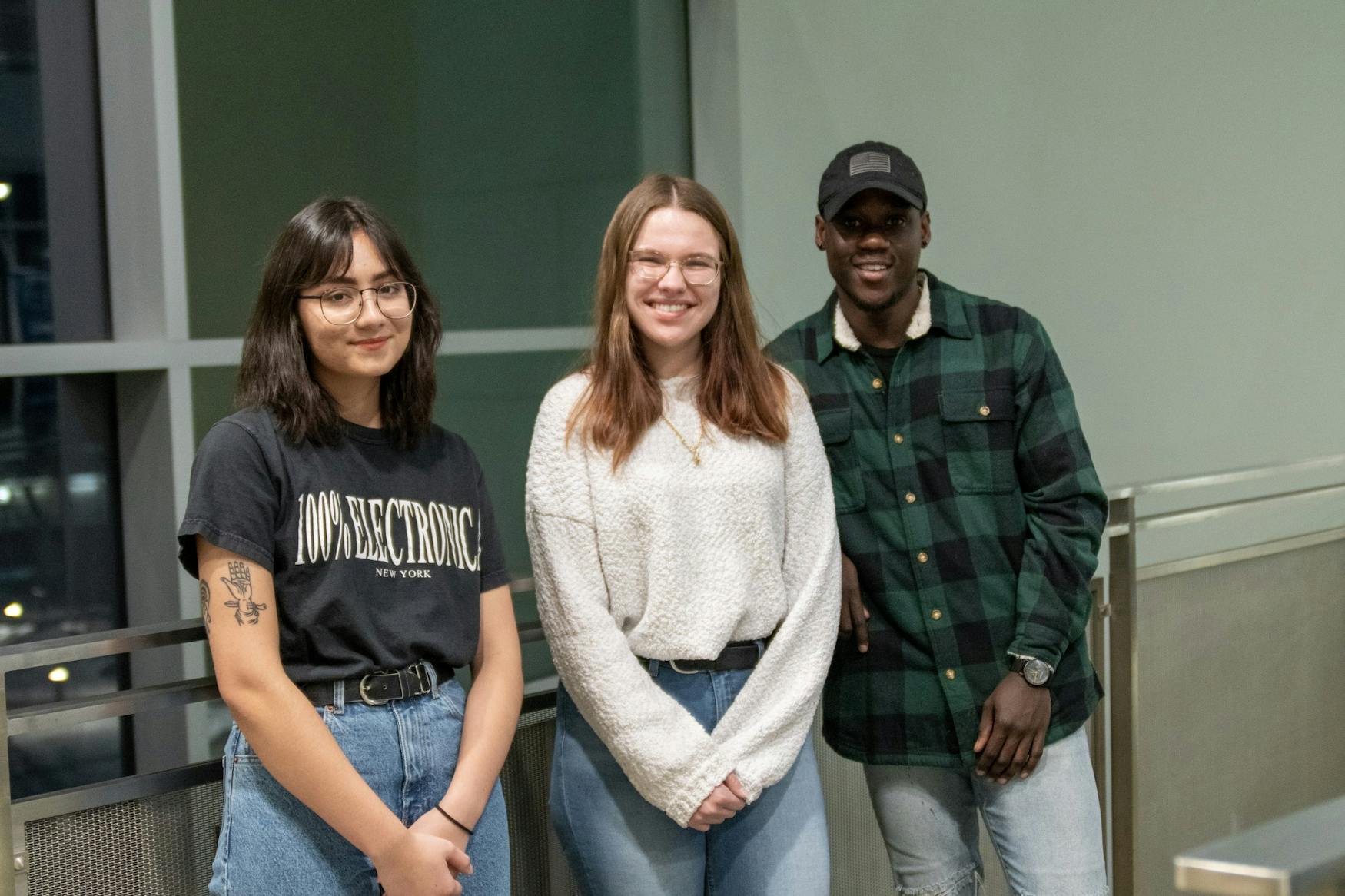Interview with Rasheed Peters ’20, Anna Bartusis ’20 and Ashley Young ’22
This week, justArts&Culture spoke with Rasheed Peters ’20, Anna Bartusis ’20 and Ashley Young ’22, members of the FA 17B: Printmaking: Silkscreen class.
JAC: How did you get involved with print making?
Rasheed Peters: I am a Studio Art minor, which is something that happened by accident … My medium of choice when it comes to art is sculpture. It has always been sculpture. But this year I definitely want to try something new, expand my skill set. So I came upon Silkscreen printing, just something that I wanted to try… It’s been quite an experience.
Anna Bartusis: I have taken another printmaking class with Sonia Almeida, the instructor, and I enjoyed my time. So I wanted to try silkscreen because I have never done that before.
Ashley Young: I took the class as a major requirement … I had never done printmaking before. I strictly only did drawing and painting, so I want to try something new, expand my horizon.
JAC: What’s different between screen printing and the other method of arts?
RP: I think what I like about it is the uncertainty. ... The first print you make, there’s always an element of surprise. You can make a very intricate design but when you do the first print it might not look like what you intend it to look like. So I think the uncertainty is something beautiful. The result [is] probably not something exactly what you want, but still aesthetically pleasing regardless. With other methods like sculpture that I have done or digital illustration, you can clearly direct what the outcome is. With screen printing it’s more of a game.
AB: I like the repetitive nature of it. Because when you make a screen, it’s the same to make five, 10 or 20 prints that are all basically the same. So it’s great for making repeating prints, like if you want multiple prints, patches or t-shirts.
AY: I really like how experimental it is. Although there is a lot of planning that goes into it, you can kind of play with what the outcome is going to be. And there’s a lot of room for error because it’s such a physical process to actually printing the screen. You can do a lot of experimentation. You don’t quite know how it’s going to turn out.
JAC: All of participated in the Silkscreen Exhibition in Pollock. Tell me about the project you presented at the exhibition.
RP: My piece that was exhibited is called “Two Sides of Every Season.” It essentially tries to capture the season changes and seasonal depression as well. How moods change with season. How appearances change with season as well.
AB: I was inspired by this contemporary artist called Alex Katz. He does a lot of work with silkscreen and painting as well as sculpture. He has this series of silkscreen artworks called “Shoppers.” And they are just black and white contour drawing, really quickly done with people that are shoppers. So I took that concept, the black and white outline, and I made these series of six print figures … I was looking at the concept of people in museums looking at stuff ... So when you are looking at the piece you’re looking at yourself in a way.
AY: The inspiration behind mine was the idea of changing one’s hair, playing with your hair. I just dyed my hair at the time so it was on my mind. It kind of envolved to an idea. There’s a stereotype when people are stressed, they will impulsively change their hair. That got me thinking about birds and how birds will preen themselves under stress. So I put all that together in this patchwork. … There’s a repeat pattern in the background of scrunchies and hair clips. There’s a portrait of a girl going to cut her hair. And there’s a print of a bird and falling feathers.
JAC: Anything else you would like to tell the readers?
AB: I would recommend people to take [the class], especially any class with Sonia. She’s my favorite art teacher.
AY: [What people] don’t realize about silkscreen [is] that it’s a very time consuming process. Making the print, printing, cleaning the screen. It’s a lot of out of class work, which if people [are] thinking about taking [the class] that is something to consider. As I said before, it’s definitely worth it.
— Luke Liu



Please note All comments are eligible for publication in The Justice.